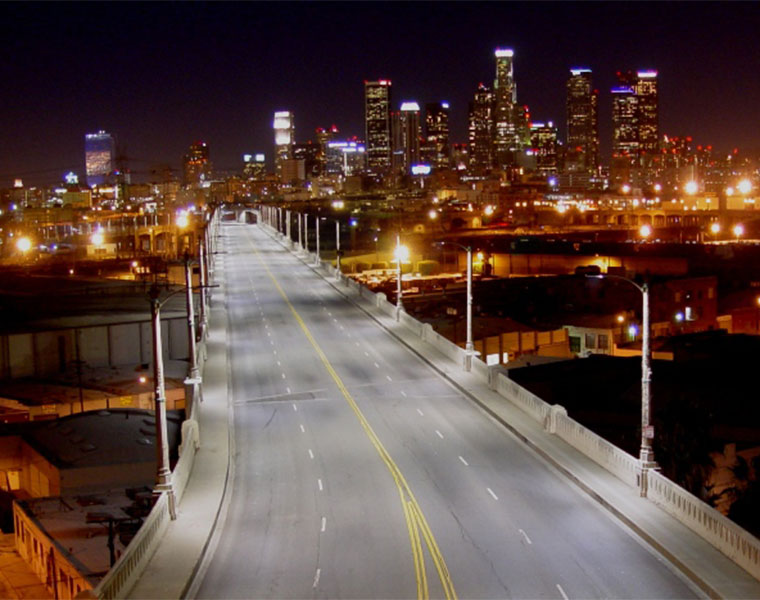About a year ago, the American Medical Association (AMA) issued community guidance on street lighting. Although the initial commotion from that has calmed somewhat, a continuing succession of news stories generated by the AMA guidance has kept the topic of LED street lighting and its potential effects on health and the environment — including the night sky — in the public’s mind. As discussion of these issues has spread, so have many misperceptions and mischaracterizations of the technical information, with the difference between what has and has not been scientifically established often blurred. So DOE has produced a variety of information resources to better clarify the facts as we currently know them.
For example, to help clarify the science underlying street lighting’s environmental effects, DOE conducted a study that examined the expected contributions to sky glow from typical U.S. conversions of high-pressure sodium (HPS) street lighting to LED. Among the key findings was that all of the LED product conversions show reduced sky glow relative to an HPS baseline when the results are expressed as unweighted radiant power, for both near and distant observers. When the results are scotopically weighted, some LED products reduce sky glow for near observers, while others increase it. For distant observers, the elimination of uplight that occurs in typical conversions to LED virtually eliminates sky glow from the street lighting system. And CCT was found to be an unreliable predictor of sky glow impacts.
Recently, DOE hosted two webinars on the sky glow study. Conducted by Pacific Northwest National Laboratory’s Bruce Kinzey and Tess Perrin, they not only covered the impact of LED street lighting on sky glow, but also delved into the modeling effort underlying the study, as well as the influence of individual variables. If you were unable to attend, the webinar files are now available for download.
In addition to the sky glow study, a new DOE-funded research project conducted by Virginia Polytechnic Institute and State University will investigate the health impacts of outdoor lighting by providing key experimental data on the effects of roadway lighting on drivers, pedestrians, and residences that experience light trespass. Through a highly controlled experimental test plan aimed at identifying threshold effects for different CCTs, the project will provide insight into the conversion of outdoor lighting systems to SSL and will allow for science-based, informed decision-making.
DOE is also preparing an operational sky glow tool intended for use by street lighting designers and others to conduct ballpark comparisons of the relative sky glow impacts of their design decisions. And we’ve expanded our helpful online resources on the topic, which now include updated tables on selected blue-light characteristics of various outdoor lighting sources at equivalent lumen output. The tables were updated in June from earlier versions, to increase the number of LED samples on which the corresponding data ranges are based. Data for each source include a measured CCT, the calculated percentage of radiant power contained in “blue wavelengths” (as defined by an astronomical resource based on ability to affect sky glow, corresponding to wavelengths between 405 and 530 nm), and the corresponding scotopic and melanopic multipliers that are shown relative to an HPS baseline, due to that source’s predominance in the existing outdoor lighting market.
We’ve also included a link to a position statement recently issued by the Illuminating Engineering Society of North America (IES) that offers additional valuable, science-based information on the human and environmental effects of LED street lighting. The IES position statement disagrees with some aspects of the policy statement on outdoor lighting that was issued last year by the AMA. AMA Policy H-135.927 “encourages minimizing and controlling blue-rich environmental lighting by using the lowest emission of blue light possible to reduce glare” and “encourages the use of 3000K or lower lighting for outdoor installations such as roadways.” IES Position Statement PS-09-17 points out, among other things, that CCT “is inadequate for the purpose of evaluating possible health outcomes” and that the AMA recommendations “target only one component of light exposure (spectral composition) of what are well known and established multi-variable inputs to light dosing that affect sleep disruption, including the quantity of light at the retina of the eye and the duration of exposure to that light.” The IES statement notes that increased melanopic content is “a more widely accepted input to the circadian system associated with higher risk for sleep disruption and associated health concerns,” and that “LED light sources can vary widely in their melanopic content for any given CCT.”
In addition, DOE is playing an active role on the recently formed IES Sky Glow Calculations Committee, supporting the position of Chair. The purpose of the committee is to assemble guidance and recommendations regarding methodologies for estimating sky glow from a range of anthropogenic sources of light, corresponding primarily to those falling under IES purview. Currently, no such IES guidance exists.
We continue to learn more and more about the unintended consequences of lighting the nighttime environment, but much more research is needed. So stay tuned.
Best regards,
Jim Brodrick
